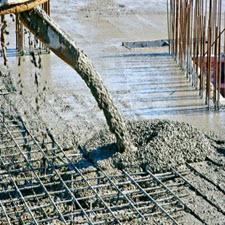توضیحات
چکیده
بتن ریزی در شرایط هوای گرم می تواند به بروز مشکلاتی در بتن تازه و سخت شده کمک نماید و معمولا” به پائین آمدن کیفیت بتن سخت شده منجر می شود . معمولا” در چنین شرایطی باید. بتن ریزی متوقف گردد و در صورت نیاز به انجام عملیات بتن ریزی باید تدابیر خاصی اندیشیده شود تا خسارت های وارده به حداقل برسد و یا ایجاد گردد . تعریف و شناخت شرایط هوای گرم ، اثر خسارت بار این شرایط ، اثر عوامل تشدید کننده این خسارت ها ، راه حلهای فرار از حصول این شرایط ، توجه به نوع مصالح مصرفی از جمله مواردی است که در این نوشته از نظر می گذرد . وجود شرایط هوای گرم در مناطقی از کشور ما بویژه در حاشیه خلیج فارس و دریای عمان و وجود شرایط خاصی مانند ایجاد خوردگی در میلگردهای بتن این شرایط را برای ما پر اهمیت می نماید و باید بدان توجه خاصی مبذول داشت . سعی می شود نکات مد نظر آئین نامه بتن ایران به همراه توضیحات ضروری قید شود تا در عمل بتوان از آنها استفاده نمود .هوای گرم با ترکیبی از دمای زیاد هوا ، رطوبت نسبی کم ، دمای بالای بتن و سرعت وزش باد حاصل می گردد . وجود دمای زیاد بتن و عواملی که باعث تبخیر شدید آب از سطح آن می شود می تواند خسارت بار باشد . حتی می توان گفت دمای زیاد بتن به تنهایی نیز می تواند به بروز این شرایط کمک زیادی نماید. معمولا” وقتی دمای بتن از 0C 32 در هنگام بتن ریزی و یا تا زمان گیرش تجاوز نماید شرایط هوای گرم حاصل می شود. بروز شرایط ایجاد تبخیر با شدتی بیش از kg/m2 1 در هر ساعت از سطح بتن قطعا” مشکل زامی باشد . حتی توصیه می گردد شدت تبخیر از سطح بتن کمتر از kg/m2 5/0 در هر ساعت باشد تا خسارت هائی به بتن وارد نشود و کار بتن ریزی بهتر انجام گردد.
ABSTRACT
Concreting in hot weather conditions can help prevent problems in fresh and hardened concrete, and usually “results in a lower quality of hardened concrete. Usually” in such conditions. Concreting should be stopped and concrete measures should be taken if necessary to minimize or cause damage. Definition and understanding of hot air conditions, the damaging effect of these conditions, the effect of exacerbating these damages, the solutions to escape these conditions, and the type of consumable materials are considered in this article. The existence of hot weather conditions in areas of our country, especially on the coast of the Persian Gulf and the Oman Sea, and the existence of special conditions such as corrosion on concrete bars make these conditions very important to us and we should pay special attention. It is attempted to consider the Iranian Concrete Regulations along with the necessary explanations so that they can be used in practice. Hot air is obtained by a combination of high air temperature, low relative humidity, high concrete temperature and wind speed. The high temperature of the concrete and the factors that cause the water to evaporate from its surface can be damaging. It can even be said that high temperatures alone can greatly contribute to these conditions. Usually, “when the concrete temperature exceeds 0C 32 during concreting or until curing time, hot air conditions will result. Condensation of evaporation with intensities greater than 1 kg / m2 per hour of concrete surface is definitely a problem.” It is even recommended that the evaporation intensity of the concrete surface be less than 0.5 kg / m2 per hour in order to avoid damages to the concrete and make the concrete work better.
Year: ۲۰۱۶
Source : ۰
By : 0
File Information: persian Language/ 30 Page / size: 38.15 KB
سال : ۱۳۹۵
منبع : ۰
کاری از : ۰
اطلاعات فایل : زبان فارسی / 30 صفحه / حجم : KB 38.15







نقد و بررسیها
هنوز بررسیای ثبت نشده است.